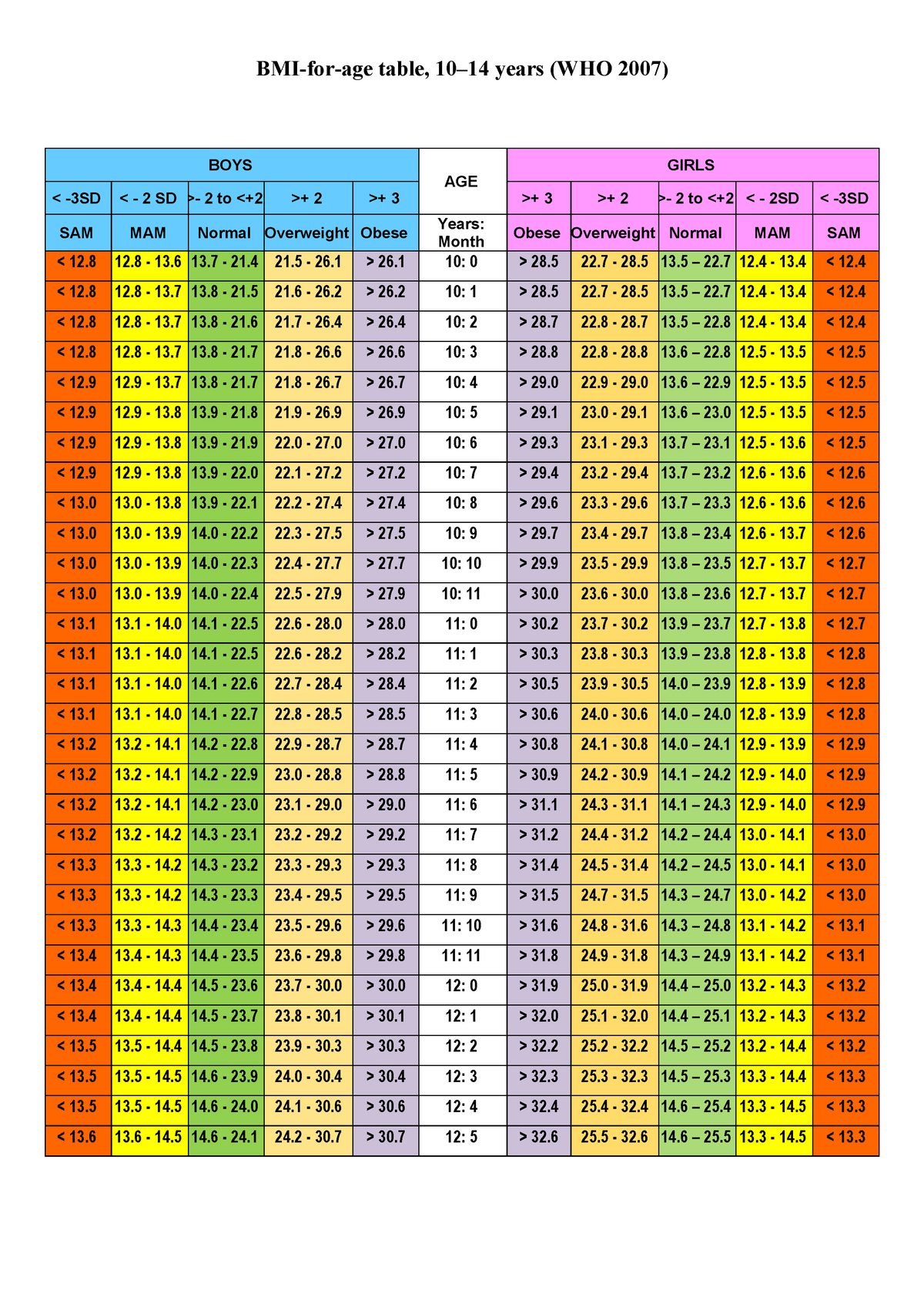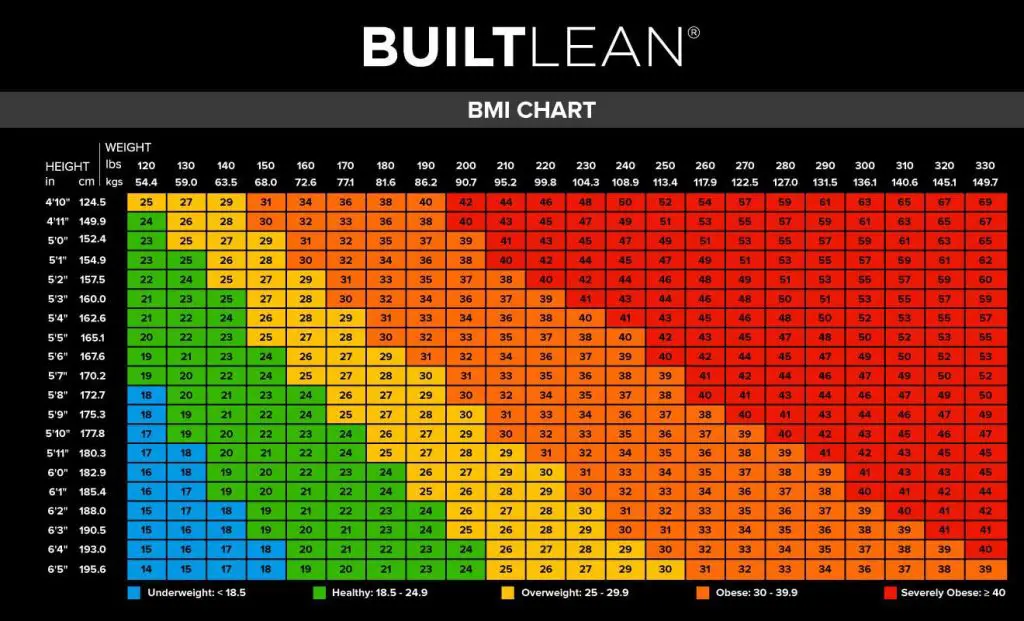BMI graphs for women are a great way to visualize and monitor body weight. These graphs help to identify whether a woman’s weight is within a healthy range or if she is underweight or overweight. It is important for women to be aware of their body’s weight to ensure they are not putting themselves at risk for health problems. The graph uses a range of numbers to indicate a female’s BMI. A BMI of 18.5 to 24.9 is considered healthy, while a BMI under 18.5 is considered underweight and a BMI over 24.9 is considered overweight.
It is easy to use BMI graphs for women to access information about their health; all you need to do is input your height and weight, and the graph will generate your BMI. It is important to bear in mind that BMI is just an indication and there are other factors that affect health. However, BMI graphs are a useful tool for tracking changes in weight and health.
obese chart with age

A BMI graph female depicting an obese chart with age can be a helpful tool for understanding how body weight changes over time. It allows a comparison of BMI scores for women of different ages. It also shows the relationship between BMI and age, as well as how BMI scores may vary from one age group to the next. As a woman ages, her BMI may naturally decline. This could be due to a decrease in muscle mass and a decrease in overall body mass.
It may also be due to a decrease in body fat. The graph can help identify if a woman is gaining weight too quickly or if her BMI is not decreasing as it should. The chart can also provide insight into how a person’s BMI may be affected by lifestyle factors, such as diet and physical activity. A woman’s BMI may be affected by her calorie intake, the amount of physical activity she performs, and her overall lifestyle. Understanding how a person’s BMI relates to age can be useful for preventative health care. It can help identify potential health risks associated with being overweight or obese. Additionally, it can help guide health professionals in providing individualized advice on diet and exercise to patients. In conclusion, the obese chart with age can be a useful tool for understanding how BMI changes over time. It can help identify how lifestyle factors may be affecting BMI scores, as well as how BMI scores may change with age. Understanding this information can help health professionals provide more individualized advice for patients.
What is overweight for age and height?
Overweight for age and height is a measure of a person’s body mass index (BMI). It is calculated by dividing a person’s weight in kilograms by the square of their height in meters. A BMI graph for females can be used to help determine if someone is overweight for their age and height. On a BMI graph for females, a healthy BMI is between 18.5 and 24.9. A BMI between 25 and 29.9 indicates that a person is overweight, while a BMI of 30 or greater indicates obesity.
It is important to remember that BMI does not measure body fat directly and may not accurately reflect a person’s health. Other factors, such as an individual’s family history, activity level, and diet should be taken into consideration. In order to accurately determine if someone is overweight for their age and height, they should consult with their doctor. The doctor may decide to conduct additional tests, such as a body fat analysis or blood tests, to help determine if a person is at an unhealthy weight. It is also important to remember that healthy weight loss is slow and steady. Rapid weight loss can be dangerous and can put a person at risk for health complications. It is always recommended to consult a doctor before starting any diet or exercise plan.
What is a good BMI by age?
Body Mass Index (BMI) is an important measure of health in adults. It is used to determine if an individual is underweight, normal weight, overweight, or obese. The BMI is determined by dividing weight in kilograms by height in meters squared. For females, the World Health Organization (WHO) has created a BMI Chart that takes into account age and gender. Generally, a good BMI for a female between the ages of 20-40 is considered to be between 18.5 and 25.
A BMI lower than 18.5 is considered underweight, while a BMI of 25-30 is considered overweight. If a female has a BMI higher than 30, she is considered obese. Although BMI can be used as a tool to assess one’s health, it is important to consider other factors such as overall body composition. It is also important to remember that a good BMI by age may not be applicable to everyone. By understanding and monitoring your BMI, you can better assess your health and make informed decisions about your lifestyle choices.
What percentage of Americans are obese?
According to a recent BMI graph for women, approximately 40% of American females are classified as obese. This means that their body-mass index is over 30, which is considered to be the threshold for obesity. This alarming statistic has remained consistent over the last twenty years, with no sign of improvement. It is estimated that up to a quarter of Americans are classified as morbidly obese, meaning their BMI is over 40. There are numerous implications for one’s health when they are obese, such as diabetes, heart disease, and stroke.
It is important to note that the BMI graph does not take into account muscle mass, so it cannot always be used as a reliable indicator of health. Nevertheless, this statistic should serve as a stark reminder of how serious the obesity epidemic has become in the United States. It is crucial that steps are taken to reduce the percentage of obese Americans, otherwise the number could continue to rise. This can be done by improving access to healthy food, providing more educational materials, and helping to create a culture of physical activity.
Is 25 BMI good?
A BMI (Body Mass Index) of 25 is generally considered to be a healthy weight for women, according to the BMI graph. This means that a woman with a BMI of 25 would be within an acceptable weight range. Having a BMI of 25 would mean that a woman’s weight is in proportion to her height, as determined by the BMI graph. In other words, a woman with a BMI of 25 would not be considered to be underweight or overweight. A woman with a BMI of 25 might still need to monitor her diet and exercise routine to maintain her weight.
Being at a healthy weight is important for overall physical and emotional health. A healthy BMI may also reduce a woman’s risk of developing certain health conditions such as heart disease, stroke, and diabetes. Eating a balanced diet and getting regular exercise can help a woman maintain a healthy weight and reduce her risk of developing these conditions. Overall, a BMI of 25 is a good indication of a woman’s overall health, as long as she is following a healthy lifestyle. Eating well and exercising can help a woman maintain a healthy weight, and in turn, a healthy BMI.
What percent of children are obese?
According to a BMI graph for females, a staggering 20% of children under the age of 19 are considered obese. This number is significantly higher than the adult obesity rate, which is around 13%. The main cause of childhood obesity is an unhealthy diet and lack of physical activity. In recent years, the amount of children who are obese has risen drastically. This is due to an increase in the availability of fast food and sugary snacks.
These kinds of foods are high in calories and low in nutritional value, making them an easy choice for busy families who are looking for an easy meal. The health effects of obesity can be seen both in the short-term and long-term. In the short-term, children who are obese are at risk of developing an array of health problems, including breathing difficulties and joint pain. In the long-term, they are more at risk of developing type 2 diabetes and other conditions that can cause long-term damage to their health. It is clear that the percentage of children who are obese needs to be addressed. Healthy eating and physical activity need to be encouraged from an early age in order to reduce the amount of children who are obese. In addition, parents should be made aware of the risks associated with childhood obesity in order to make informed decisions about their children’s diet and lifestyle.
What is the highest obesity rate?
The highest obesity rate according to BMI graph of female is 40 and above. This means that these women have a body mass index of 40 or more. It is defined as an excessive amount of body fat for their individual height and weight. This rate is considered as dangerous for health and life. It puts the individuals at higher risk of many serious medical conditions, such as heart disease, stroke, diabetes, and even certain types of cancer. To keep their health in check, it’s important for these women to exercise regularly, eat healthy, and maintain a healthy lifestyle. Being obese can also lead to psychological distress such as depression and low self-esteem, so it is essential to have a good support system of friends and family.







